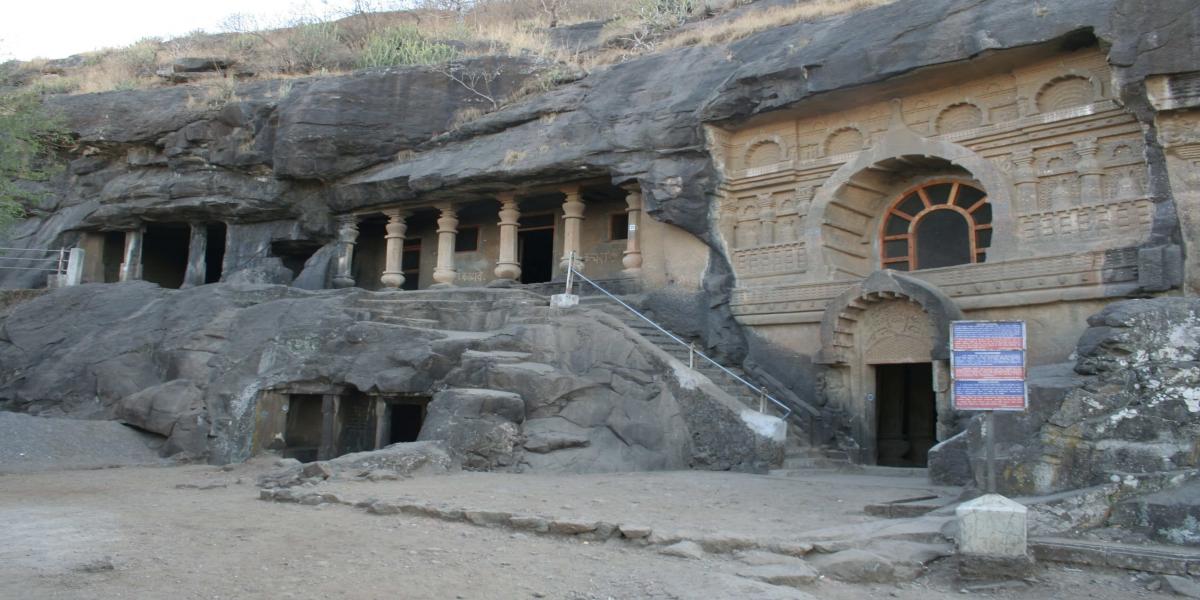Pandav Lena Caves
Nasik, an important town on the ancient trade route is situated on both banks of Godavari river. This ancient mount is locally known as Matichi Garhi. Its surrounding area had been explored in 1883 and then 1908 and the regular excavation was taken up in 1950-51 by the Deccan collage. This excavation revealed cultural remains of five periods. Apart from this the lower Palaeolithic tools were also recovered from the buried river bed at Gangapur near Nasik. Period I: Chalcolithic Culture (1500 BC to 500 BC) The characteristics pottery includes the Jorwe Ware, grey Ware, and whitish red Ware. Together with this, microliths made on chert and chalcedony also occurred. There is a break between this and subsequent Period II. Period II: Early Historical Period (500BC. to 50AD.) This period is divided into two phases, A and B, dated on the basis of the finds from the 5th to 3rd century BC and 3rd century BC to 1st century AD respectively. Period II A has yielded remains of mud walls, floor levels, and ring-wells but a large amount of ashes, burnt wood and charred pottery suggests that the habitation was destroyed several times by fire. The predominant pottery is the NBPW together with the red, black and red and black Wares. Other finds include beads of semi-precious stones, bone, iron, glass, shell and terracotta objects. Of great interest are the bones points having close similarities with those from Taxila, This cultural equipment continue in subsequent Period II B, the additions being uninscribed cast copper coins, and few sherds of the Russete-coated painted ware. Period III, Roman Contact (50 AD.-200AD.) revealed sherds of the Samian ware and sprinklers and bowls of the Red Polished Ware. Though no structural remains occur, the recovery of a terracotta tile suggests the use of well-built houses. The small finds comprise beads, terracotta and iron objects. Period IV- Muslim-Mughal-Maratha (1400 AD.-1875 AD.) revealed remains of stone structures together with a coin belonging to Mughal ruler. The pottery consists of the Celadon Ware and glazed ware. A few pieces of polychrome glass bangles also found. Period V was designated as Maratha-Modern period on the basis of ruined stone structures with a coin of Malhar Rao Gaikwad of Baroda









